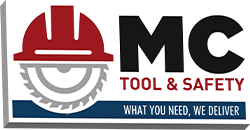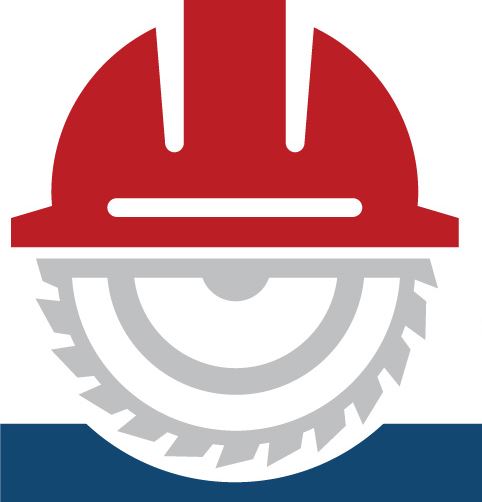Harnessing Safety: A Guide to Choosing the Right Fall Protection Gear
So, you've decided to take the plunge—not literally, we hope—and invest in fall protection gear. But where to start? Walking into the safety equipment section can feel like stepping into a superhero's closet. Capes are optional, but a good harness? That's essential. Let's dive into the world of fall protection gear with a sprinkle of humor and a heap of practicality.

The Not-So-Secret Identity | The Full-Body Harness:
Think of the full-body harness as your personal safety suit. It's not about making a fashion statement (though who doesn't love high-visibility colors?); it's about keeping you securely attached and distributing forces during a fall. When selecting a harness, consider the following:
-
Comfort: Look for padded straps and adjustable fittings. If you're going to wear it all day, it might as well feel like a safety hug.
-
Durability: Ensure it's made from materials that can withstand the job's demands. Nylon and polyester are popular choices.
-
Features: Depending on your work, you might need extra D-rings or tool holders. Customize your harness like you would your favorite sandwich—add what you need, hold what you don't.

|
 |
 |
Lanyards | The Safety Leash You Didn't Know You Needed:
Lanyards connect your harness to an anchor point. They're the bungee cords of the fall protection world, minus the thrill-seeker aspect. When choosing a lanyard, consider:
-
Length: Too long, and you defeat the purpose; too short, and you're restricted. Find that Goldilocks length that's just right.
-
Material: Shock-absorbing lanyards reduce the force on your body during a fall. It's like landing on a marshmallow instead of concrete.
-
Compatibility: Ensure your lanyard works with your harness and anchor points. Mixing incompatible gear is like trying to fit a square peg in a round hole—frustrating and unsafe.
Self-Retracting Lifelines (SRLs)| The Yo-Yo of Safety:
SRLs are like the tape measures of fall protection. They extend and retract as you move, keeping the line taut and reducing fall distance. When selecting an SRL:
-
Length: Determine the maximum distance you'll be from the anchor point. SRLs come in various lengths to accommodate different work scenarios.
-
Environment: For harsh conditions, choose an SRL with a durable housing and corrosion-resistant materials.
-
Weight Capacity: Ensure the SRL can support your weight, including tools and equipment. No one wants to test the limits of their gear mid-fall.
Different Types of SLR's

|
 |
 |
Anchorage Points | The Unsung Heroes:
Your fall protection system is only as strong as its anchor point. It's the steadfast friend who holds you back from making questionable decisions—or in this case, from hitting the ground at terminal velocity. The key factors to consider when choosing an anchor point are:
-
Strength: OSHA requires that anchor points must support at least 5,000 pounds per worker attached or meet a safety factor of at least two times the impact force of a fall when designed by a qualified person. (OSHA Standard 1926.502)
-
Placement: The best anchor points are above the worker's head to minimize fall distance and reduce the potential swing hazard (aka, the human wrecking ball effect).
-
Material: Choose anchor points made of structurally sound materials—no, a rusty old pipe doesn’t count. Beam clamps, anchor straps, and D-ring anchors from trusted brands like FallTech and SafeWaze are excellent choices.
A Quick Shoutout to FallTech—Our Go-To for Fall Protection
At MC Tool & Safety, we take our supplier relationships as seriously as we take gravity—which is to say, very seriously. One of our top partners in keeping people safely upright is FallTech. They don’t just make great gear—they also share their knowledge.
If you’re scratching your head wondering what makes a good anchor (and no, it’s not the rusty steel beam your coworker pointed at), FallTech has an excellent write-up that breaks it all down in plain English. Their "Anchors 101: A Comprehensive Guide to Anchorages" is packed with insights on anchor types, selection, and inspection tips.
Spoiler alert: Not all anchors are created equal—and using the wrong one could turn your fall arrest system into a fall assistance system (yikes).

The Great Debate: Lanyard vs. SRL
People often ask, “Should I use a lanyard or a self-retracting lifeline (SRL)?” The answer: it depends on your work environment.
If you need freedom to move without worrying about a long fall, SRLs are your best bet. But if you’re working in a more controlled area, lanyards can do the trick—as long as they’re the right length.
The Importance of Inspection
You wouldn’t trust a parachute that’s been sitting in a dusty garage for years, so why trust fall protection gear that hasn’t been inspected? Here’s what you need to check before each use:
-
Harness: Look for frayed webbing, broken stitching, rusted D-rings, and missing labels.
-
Lanyard/SRL: Check for excessive wear, broken retracting mechanisms, or damaged snap hooks.
-
Anchor Points: Ensure they’re rated for the correct weight and are secured properly.
A good rule of thumb? When in doubt, throw it out. It’s better to spend money on new gear than on hospital bills.
Last Thought: Safety is No Joke—But It Can Be Funny
By now, you should have a solid understanding of the fall protection essentials that keep you tethered to safety (literally). Whether it’s choosing the right harness, lanyard, or SRL, your life depends on making the right decisions.
In our final post in this series, we’ll cover fall protection guidelines for jobsites, including OSHA regulations, common violations, and how to create a fall safety plan that won’t put your crew to sleep. Stay tuned—and stay anchored!
Want expert advice on your jobsite’s fall protection needs?
Visit MC Tool & Safety
Stop by: 2851 84th Lane NE, Blaine, MN 55449
Give us a call: 763-786-5350
We’ll make sure you’re geared up and gravity-proof.
Until next time—stay safe, stay strapped in, and keep your feet where they belong (on solid ground)!







